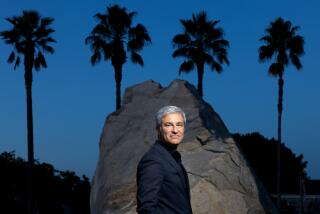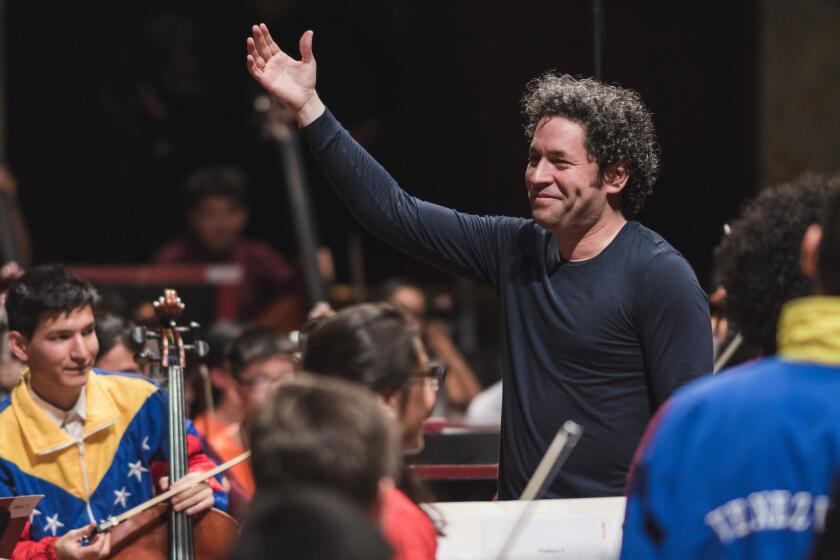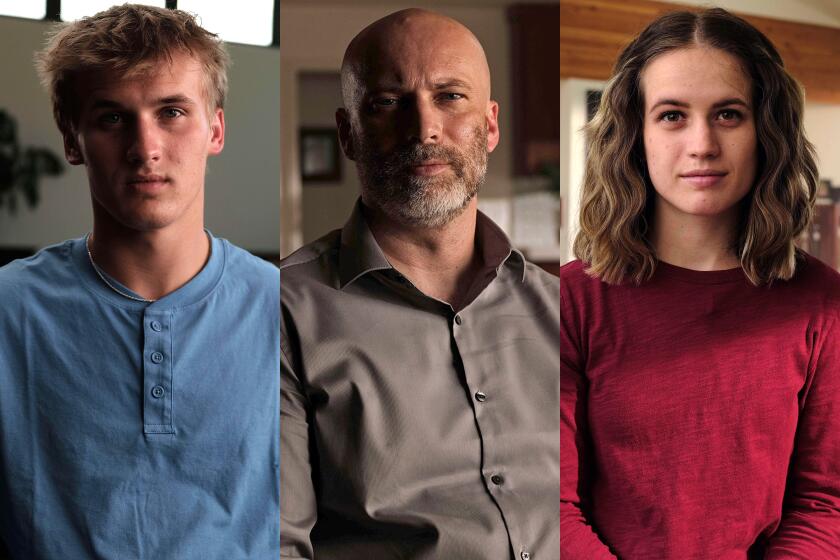MOCA Director to Resign; Helped Transform Museum
- Share via
Richard Koshalek, an energetic champion of new art and architecture who joined Los Angeles’ Museum of Contemporary Art in 1980 when the museum was still on the drawing board and went on to serve as its director for the past 15 years, said Monday that he will step down in the summer of 1999.
Koshalek is fulfilling terms of a contract signed nearly four years ago but only now being revealed. He said: “It is time. This is something that I wanted because I think 20 years is enough.”
When Koshalek arrived in Los Angeles, the planned museum had $50,000 in the bank, a professional staff of three and no collection. Now MOCA operates on a $10-million annual budget with a staff of 75, attracts about 450,000 visitors a year, organizes exhibitions that travel all over the world and has a 4,000-piece collection of postwar art.
Koshalek will serve the museum as a consultant for five years after he leaves his post and said he plans to stay in Los Angeles as a cultural advocate and facilitator for downtown Los Angeles, although he would not elaborate.
A charismatic leader, Koshalek, 56, has presided over an institution that began as nothing more than a dream of local contemporary art supporters but has become a major fixture on the international art scene. Presenting programs in two downtown facilities--an elegant structure on Grand Avenue and a vast warehouse-like space in Little Tokyo--the museum is the nation’s largest showcase for contemporary art.
Under Koshalek’s leadership, the museum is winding up a $25-million capital campaign that will bring its endowment to about $50 million. Koshalek also has encouraged the museum to embrace architecture in its exhibitions program and served as an advocate for the Walt Disney Concert Hall, designed by Los Angeles-based architect Frank O. Gehry.
Upon hearing the news of Koshalek’s resignation, civic and cultural leaders praised his accomplishments.
“MOCA has grown into one of the cultural centerpieces of Los Angeles through the indefatigable efforts of Richard Koshalek, and this city is fortunate to have had him as director of the Museum of Contemporary Art,” said Mayor Richard Riordan.
John Walsh, director of the J. Paul Getty Museum, said, “Richard built MOCA, and now I can’t imagine Los Angeles without MOCA or Richard. This is a business without many heroes, but what Richard did, not only to create MOCA but to be sure that the audience saw truly important and advanced art--not just the easy stuff--and to stay courageous when other people doubted MOCA, was heroic.”
Calling Koshalek “an irrepressible star,” the chair of MOCA’s board of trustees, Audrey M. Irmas, said she has high hopes for finding his successor because he has helped to build “a great museum in a great city.” Eleven other American art museums are looking for directors, she said, but “MOCA won’t be on the bottom of the list.”
MOCA’s next director “won’t be Richard, but we hope to find someone who can match his enthusiasm and energy, if that’s possible, to take us to the next level,” said David Laventhol, editor at large of Times Mirror Co., parent of The Times, and a MOCA trustee who will head the search committee. The committee is in the process of talking to executive search firms, he said.
A native of Wisconsin who studied art history and architecture at the University of Minnesota, Koshalek began his career at the Walker Art Center in Minneapolis, serving as registrar, assistant curator and curator from 1967 to 1972. He was in charge of the public art program for the National Endowment for the Arts in Washington from 1972 to 1974.
He directed the Fort Worth Art Museum from 1974 to 1976 and the Hudson River Museum in Yonkers, N.Y., from 1976 to 1980. From there, Koshalek joined MOCA in 1980 as deputy director and chief curator, brought in at the invitation of trustee Eli Broad. At first, Koshalek was obscured by the founding director, Pontus Hulten, a Swedish-born, internationally renowned art world figure who had left his high-profile position as director of the Pompidou National Center of Art and Culture in Paris to direct the fledgling Los Angeles museum.
Chartered in 1979, MOCA is a privately funded institution built as the cultural centerpiece of the California Plaza redevelopment project on Bunker Hill. MOCA’s board of trustees had struck a deal with the Community Redevelopment Agency to have the project developer build a 100,000-square-foot museum, designed by an architect of the trustees’ choice, at no cost to the museum. In return for the free building, the agency required the trustees to raise $10 million for an operations endowment.
Hulten added considerable credibility and luster to the project, but he stepped down in 1983 after accepting an offer to direct cultural activities for the 1989 World’s Fair in Paris. Koshalek was immediately promoted to the director’s position.
He took over an institution that still lacked a building, but had ambitious plans that had already captured the art world’s attention and garnered considerable media coverage. Japanese architect Arata Isozaki had been chosen to design the museum’s permanent home. The city of Los Angeles had agreed to rent a large warehouse as a temporary exhibition hall for $1 a year, and Gehry was hired to convert the cavernous structure into a showplace for adventurous art.
Hulten’s departure raised doubts about the museum’s viability, but the warehouse, dubbed the Temporary Contemporary, opened in 1983. Three years later, the museum’s permanent building near the Music Center opened. The name of the Temporary Contemporary, which continued in operation, was changed to the Geffen Contemporary at MOCA in recognition of a $5-million gift from entertainment mogul and art collector David Geffen.
Koshalek cites MOCA’s first big acquisition--the purchase in 1984 of 80 Abstract Expressionist and Pop Art works from the collection of Giuseppe Panza di Biumo of Milan for about $11 million--as among his proudest moments. However, it was a controversial coup. Some leaders of other museums chastised MOCA’s trustees for buying the collection because Panza was on the board. Other detractors said the museum had paid too much, but as the art market rose precipitously, the price looked like a bargain.
Koshalek said the Panza collection was essential because it set a standard for quality. Major donations have followed: Television producer Barry Lowen bequeathed 67 works by 40 artists in 1985. Eighteen paintings, sculptures and drawings by 13 major modern and contemporary artists from the collection of Rita and Taft Schreiber--including a seminal work by Jackson Pollock--were given to the museum in 1989.
Other major gifts of art have come from Philip and Beatrice Gersh, the late Marcia Simon Weisman, artists Sam Francis and Ed Moses and the Lannan Foundation.
More to Read
The biggest entertainment stories
Get our big stories about Hollywood, film, television, music, arts, culture and more right in your inbox as soon as they publish.
You may occasionally receive promotional content from the Los Angeles Times.










